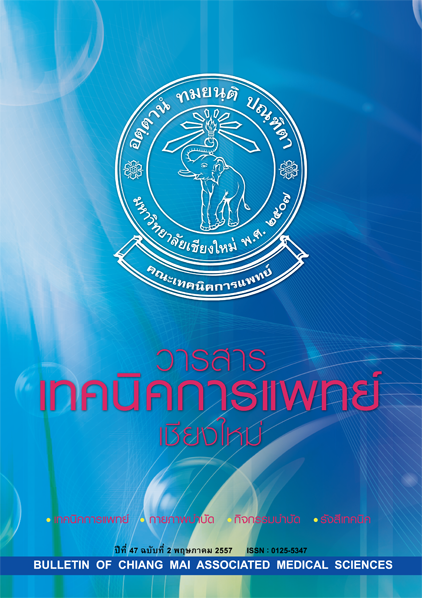Factors associated with microalbuminuria in type 2 diabetes patients in Nan Hospital, Thailand
Main Article Content
Abstract
Objective: To determine risk factors associated with microalbuminuria in type 2 diabetes patients.
Method: This retrospective study was performed on 198 patients with type 2 diabetes attending the diabetes clinic at Nan Hospital in Northern Thailand. Basic information (i.e., gender, age, weight, body mass index) of patients and factors associated with microalbuminuria [i.e., fasting blood sugar, hemoglobin A1C (HbA1C), low-density lipoprotein, blood pressure, urine microalbuminuria, serum creatinine, foot problem, eye problem] were investigated. Comparisons of mean were performed using the Student’s t-tests, and comparisons of proportions using the chi-square tests. Binary logistic regression and odds ratio analyses were performed to determine the relationship between microalbuminuria and risk factors while adjusting for covariates.
Results: Of the 198 diabetes patients, the majority were females (54.6%). The prevalence of microalbuminuria was 36.4% and of hypertension was 32.8%. The mean serum creatinine of the microalbuminuric group was significantly higher than the normoalbuminuric group (p<0.001). The prevalence of hypertension in the microalbuminuric group was higher than that in the normoalbuminuric group (38.9% and 29.4%, respectively), but this difference was not statistically significant (p=0.171). The strong risk factors for the development of microalbuminuria were gender (higher for females; OR = 2.25, p=0.025), elevated HbA1C (OR = 1.44, p=0.015) and serum creatinine (OR = 7.41, p<0.001).
Conclusion: High level of HbA1C was a risk factor for the development of microalbuminuria in type 2 diabetes patients. Early detection for diabetic nephropathy and aggressive management of this factor may be essential in preventing or delaying the progression to end-stage renal disease.
Article Details
Personal views expressed by the contributors in their articles are not necessarily those of the Journal of Associated Medical Sciences, Faculty of Associated Medical Sciences, Chiang Mai University.

